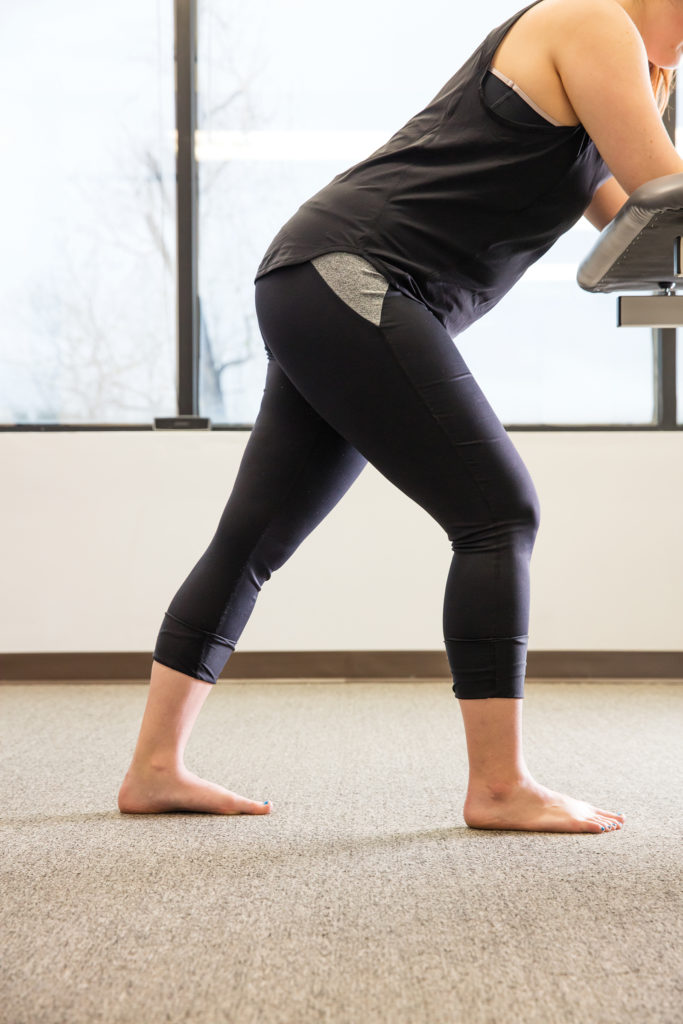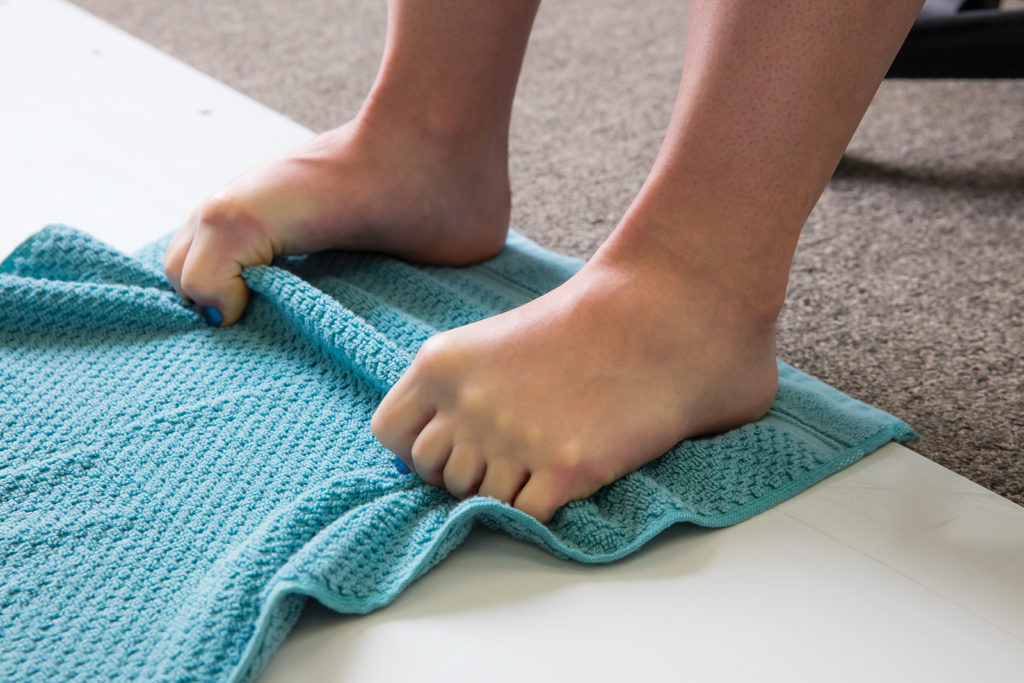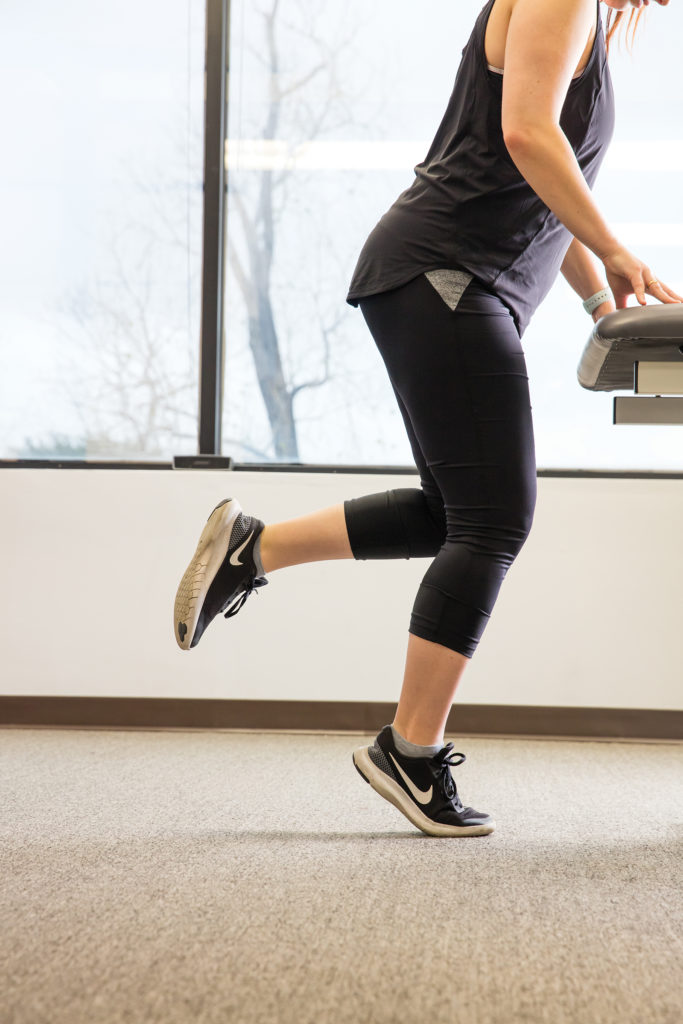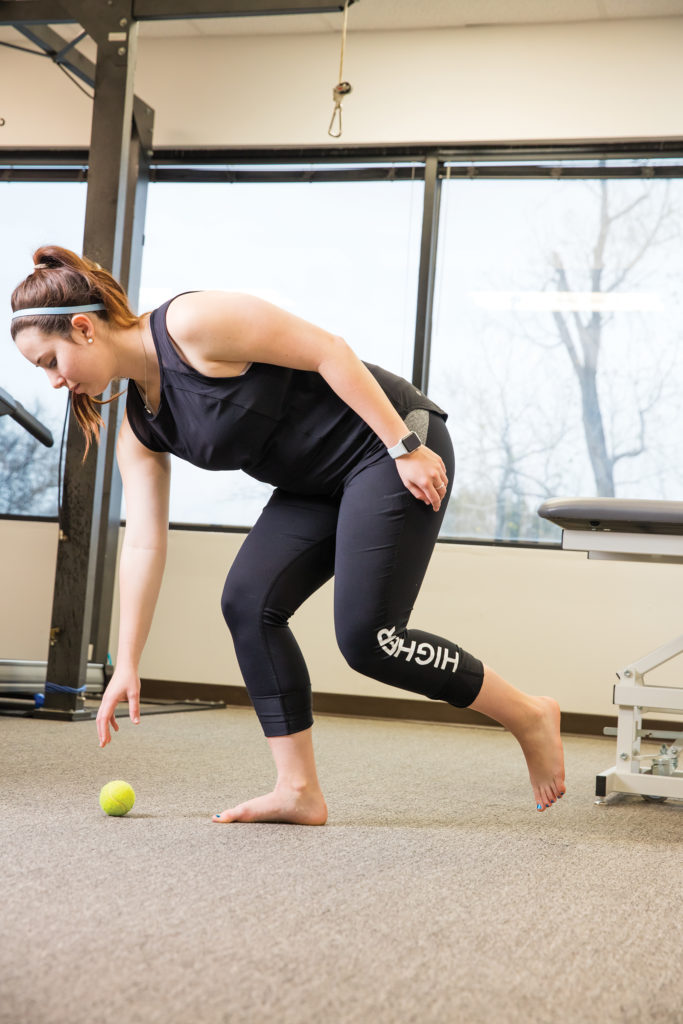Going Ankle Deep

Everyday we ask a lot of our feet and ankles without realizing it. Whether you are standing and walking frequently with your work and home life, or you are training for the Austin Marathon, your feet and ankles have to be mobile, strong and coordinated to perform everything you require of them. Having the right amount of these elements can be the difference between staying healthy and getting injured.
Mobility in your ankles can mean different things. Muscle length and flexibility (or stiffness) can determine how easily your ankle can bend in various directions. Typically the muscles that can impact the mobility of your ankles the most are your calf muscles, which include the larger gastrocnemius and soleus muscles that connect to your Achilles tendon.
If these muscles are too stiff and cannot lengthen appropriately, this will compromise the mechanics of any activity that involves squatting, walking or running. Less than optimal mobility, and thus, poor mechanics will eventually lead to breakdown in the most vulnerable areas of the body, especially with repetitive activities like running. This can mean increased stress to the arches, forefoot, knees, hips and even the lower back.
Mobility of the ankle joint itself is another factor that is not often considered. The ligament structure around the ankle can be tight and limit proper motion of the joint. If the ligaments of the ankle joint have excessive motion, from either prior ankle sprains or generally being a very stretchy and flexible person, the focus needs to shift to support, coordination and strength. Someone with a history of ankle sprains who has not properly rehabilitated from these injuries to regain strength, coordination and balance is at a higher risk of reinjury. Optimal support including proper shoes and orthotics can also improve comfort as well as limit susceptibility to injury.
Strength training goes a long way for improving performance in any physical activity or competition. Many runners incorporate strength training into their preparation for a race, but not all athletes consider the importance of strength in their feet and ankles. Muscles in the calves, ankles, feet and toes often need targeted strengthening to support the arch and avoid injuries such as plantar fasciopathy and stress fractures. Muscle weakness of the foot and calf can negatively impact the mechanics of your legs, all the way up the chain to the hips and lower back.
These are a few exercises that can address foot and ankle strength and mobility, but particularly can improve mechanics for runners.
• Calf stretch – Place one foot in front of the other, and lean on your elbows to relax into the stretch. Make sure to keep the back heel on the ground and your arch elevated. Align the back leg’s knee cap with your second toe to prevent your arch from collapsing and to better isolate the stretch to your calf. Lean more weight toward your front leg and arms, and hold the stretch for two minutes.

• Towel curl – Sit with your bare foot placed on a towel. Fully spread your toes, then curl all of the toe knuckles as if you are making a fist with your foot. Hold for three seconds, then fully relax. Repeat for 3-5 minutes on each foot.

• Bent-knee calf raise – Stand on one foot, holding onto something for balance. Push up on your toes, focusing on pulling your heel up toward your calf. Lift your heel as high as possible, then relax down to the ground. Complete two sets of 20-30 repetitions on each leg.

• Ball pickup (or single-leg quarter squat) – Stand on one leg, and perform a small bend at your knee and a larger bend at your hip in order to pick a ball or other object up from the floor. Be sure to maintain the arch space of your foot and keep your kneecap aligned over your second toe. Try to balance on one leg as much as possible as you complete 20 repetitions on each leg. Repeat for a second set.

The specifics of strengthening and the amount of mobility needed vary among people, because everyone’s body type, history and activity is unique. It’s always a good idea to see a physical therapist. They are movement specialists and are specifically trained to help you discover the best ways to address muscle imbalances and joint-mobility issues for your particular body and sport.
Ariel Quintana, PT, MS, OCS, FAAOMPT
AQ Physical Therapy






